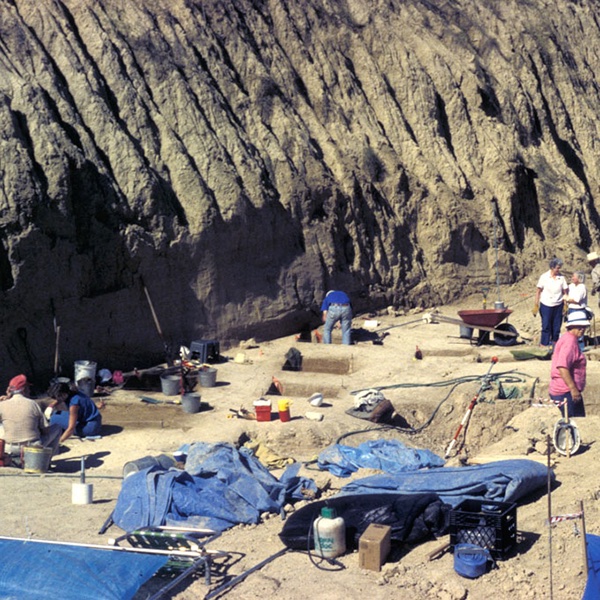Stratigraphy: Layers of Time in the Earth

Download lesson plan and included materials
Subject: Science
Grade: 11th and 12th
Author: Carol Schlenk, updated by Mary Rodriguez (2024)
Time Duration: One 45-minute class period
Objective: Students will read about the Richard Beene archeological site, which lies near San Antonio, Texas on the Medina River, and watch a short video about stratification. They will then color code the different strata present at the site and answer questions from the reading. This lesson introduces students to the concept of stratification as a historical and geological process.
TEKS: Earth Science, Grades 11-12
- (1A), ask questions and define problems based on observations or information from text, phenomena, models, or investigations
- (9D), model the processes of mass wasting, erosion, and deposition by water, wind, ice, glaciation, gravity, and volcanism in constantly reshaping Earth's surface
Aquatic Science, Grades 11-12
- (1A), ask questions and define problems based on observations or information from text, phenomena, models, or investigations
- (11D), describe how erosion and deposition in river systems lead to formation of geologic features
Materials:
- Stratigraphy: Layers of Time in the Earth student handout, pages 1 & 2
- Colored pencils or markers
- Internet access
Activities and Procedures:
Step 1: Ask Students how we gain information about peoples and cultures from thousands of years ago. Explain that archeologists dig in the earth for artifacts, (objects made or used by man) that help us understand how people of long ago lived.
Step 2: Distribute pages 1 & 2 of the activity, Stratigraphy – Layers of Time in the Earth. Read the text of page 1 aloud with students. Ask students for examples of artifacts they sometimes see on the ground and that future archeologists may find (for example, gum wrappers, marbles, buttons, etc.)
Step 3: Explain that students will view an action video illustrating the stratification process. Before viewing the video, display the following questions (omitting answers) and read them aloud with students:
- What Texas river is depicted in the video? (answer: Medina River)
- What stratification time span was depicted in the video? (answer: 15,000 years)
- Describe the cause and effect process depicted in the video which created the strata. (answer: Cause – continual flooding of the Medina River: Effect – layers of silt and gravel left by the flooding built up strata)
- List at least 3 examples of human interaction at the site. (possible answers: prehistoric peoples hunting and camping on the Medina River; Spanish explorers and missionaries moving through the area; Spanish ranchers settling in the area; cotton farmers and enslaved people cultivating the area)
Have students go to the Texas Beyond History Digging Through Layers of Time website at www.texasbeyondhistory.net/beene/digging/ and click through the See Stratification in Action activity. As they view the video, have them write down the answers to the above questions. After viewing the activity, call for volunteers to read their answers to the questions and discuss.
Step 4: Distribute the stratigraphy diagram handout and colored pencils. Have students complete the worksheet.
Step 5: Have students write their answers to the four questions on the diagram handout.
Closure: Ask students what one artifact from their lives that represents them and why.
Modification: Have students color only the sky, trees, and color code only the wide bands on the diagram. The four questions on the handout may be answered aloud.
Extension Activities: Have students read aloud and explain their answers to question #4 (Why do you think people camped at this site over and over again during different time periods?) on the diagram handout.
Assessment:
- Completed color-coded stratigraphy diagram
- Answers to the four handout questions
- Answers to the video questions